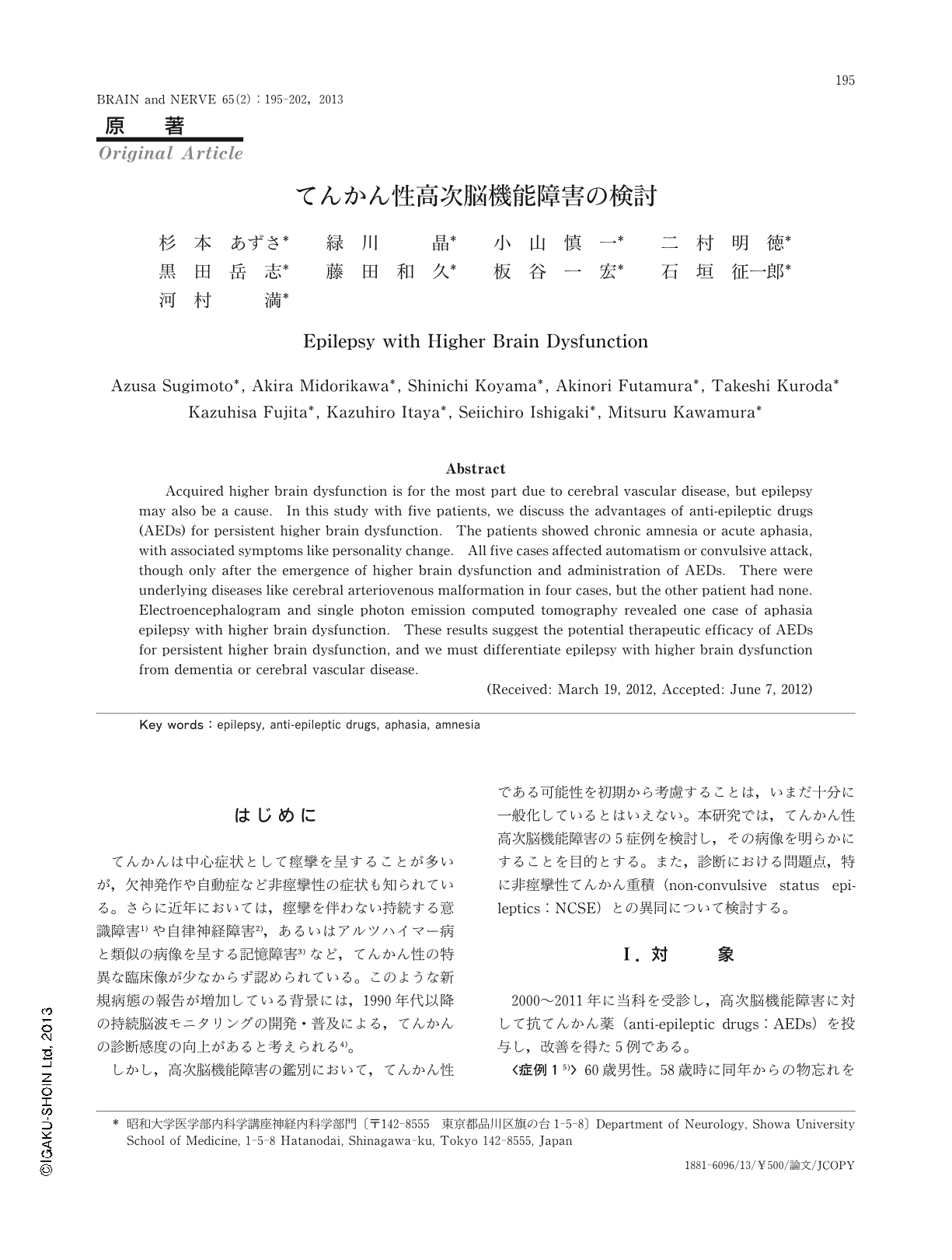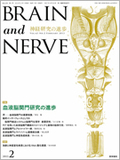Japanese
English
- 有料閲覧
- Abstract 文献概要
- 1ページ目 Look Inside
- 参考文献 Reference
はじめに
てんかんは中心症状として痙攣を呈することが多いが,欠神発作や自動症など非痙攣性の症状も知られている。さらに近年においては,痙攣を伴わない持続する意識障害1)や自律神経障害2),あるいはアルツハイマー病と類似の病像を呈する記憶障害3)など,てんかん性の特異な臨床像が少なからず認められている。このような新規病態の報告が増加している背景には,1990年代以降の持続脳波モニタリングの開発・普及による,てんかんの診断感度の向上があると考えられる4)。
しかし,高次脳機能障害の鑑別において,てんかん性である可能性を初期から考慮することは,いまだ十分に一般化しているとはいえない。本研究では,てんかん性高次脳機能障害の5症例を検討し,その病像を明らかにすることを目的とする。また,診断における問題点,特に非痙攣性てんかん重積(non-convulsive status epileptics:NCSE)との異同について検討する。
Abstract
Acquired higher brain dysfunction is for the most part due to cerebral vascular disease, but epilepsy may also be a cause. In this study with five patients, we discuss the advantages of anti-epileptic drugs (AEDs) for persistent higher brain dysfunction. The patients showed chronic amnesia or acute aphasia, with associated symptoms like personality change. All five cases affected automatism or convulsive attack, though only after the emergence of higher brain dysfunction and administration of AEDs. There were underlying diseases like cerebral arteriovenous malformation in four cases, but the other patient had none. Electroencephalogram and single photon emission computed tomography revealed one case of aphasia epilepsy with higher brain dysfunction. These results suggest the potential therapeutic efficacy of AEDs for persistent higher brain dysfunction, and we must differentiate epilepsy with higher brain dysfunction from dementia or cerebral vascular disease.
(Received: March 19, 2012, Accepted: June 7, 2012)

Copyright © 2013, Igaku-Shoin Ltd. All rights reserved.


